Doodh Sooji aka Mohanbhog is a type of Halwa, which is a light version of Sooji Halwa. This semolina porridge is often served to children and the elderly in Bengali households.
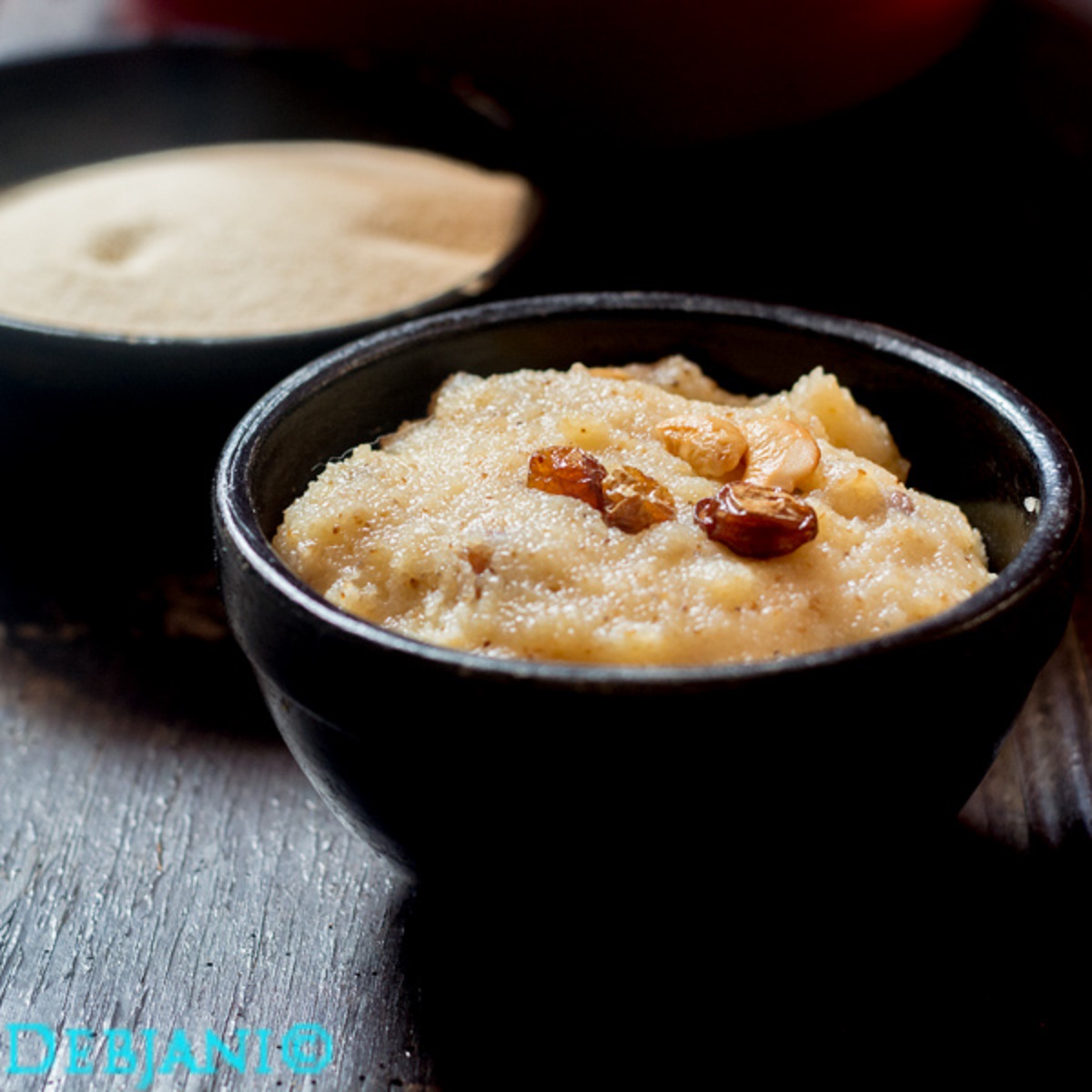
Jump to:
- Doodh Sooji aka Mohanbhog!
- Mohanbhog cherished by Madanmohon Jiu
- Substitutions
- Variations
- Equipment
- Top tip
- Frequently Asked Questions
- Related
- Pairing
- Here's how I cook Doodh Sooji at Debjanir Rannaghar!
- Recipe Card
- Doodh Sooji aka Mohonbhog Video Recipe
- Bengali Dessert recipe from Debjanir Rannaghar!
- Have you tried the Doodh Sooji aka Mohanbhog recipe from Debjanir Rannaghar!
I never used to be a fan of Doodh Sooji, even though it was a staple in Ghoti households like mine, growing up in Central Kolkata. I never cooked it myself before, as I just didn't like it. But recently I decided to give it a try and I'm glad I did. It turns out that making suji doesn't take much effort, and it's quite easy to prepare.
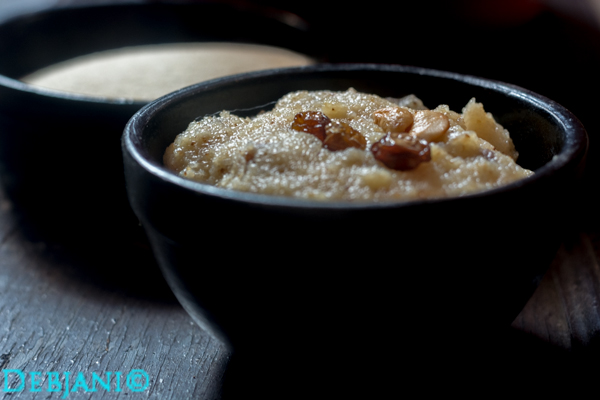
My mom still prepares it regularly, and it was during a discussion with her recently that I got the idea for this blog post. Doodh Sooji is a sweet Bengali dessert that is usually made from semolina, milk, and sugar. It can also be prepared using other ingredients such as nuts, raisins, cardamom, saffron, and ghee. Doodh Sooji is not only tasty, but it also has many health benefits.
Maa told me that they can't order Mishti very often now considering the lockdown situation, so she's making suji for dinner almost every day! Baba has a strong preference for fresh food (which includes dessert), so Maa is making the easiest of the lot without a few ingredients like ghee.
Doodh Sooji aka Mohanbhog!
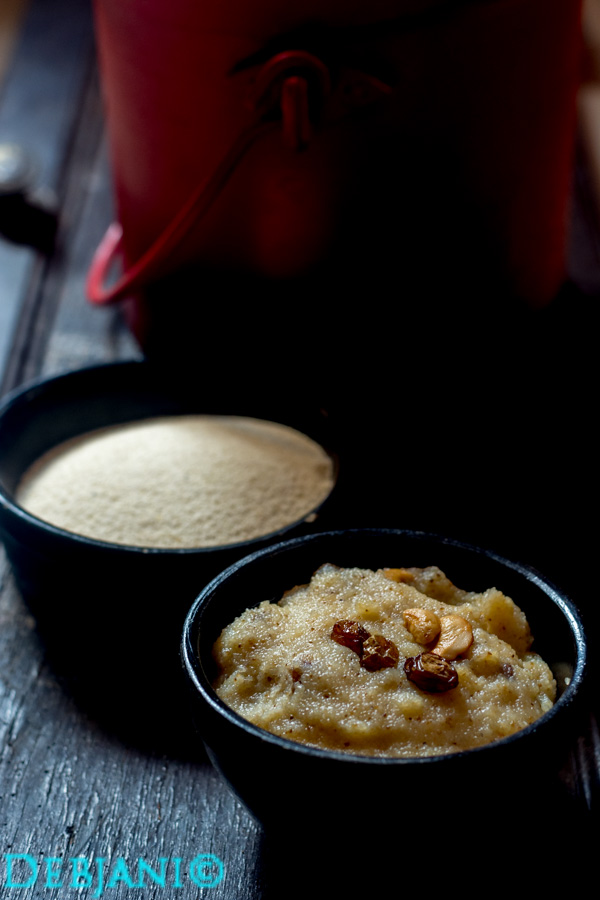
It reminded me of the growing-up years when we were part of a joint family. Every night, a big batch of Doodh Sooji was prepared for the entire family. You would think that it would be like any other dessert - but not in this case. The difference was that each family member would get one big spoonful of suji at the end of the dinner. Needless to say, to make the dish more nutritious and flavourful, ghee was added in minuscule portions and so was a raisin. Back then, I never liked it!
However, I felt like making it when Maa told me that they are having it. Till then I was not sure whether I would like it or not. Though I wasn't worried about the bowl full of dudh diye suji as both Pasta and Mehebub love this type of Bengali Dessert.
Mohanbhog cherished by Madanmohon Jiu
Here I must mention, Dida used to refer to this dish as Mohanbhog. It, in fact, was quite regular at my mother's ancestral home, as part of Madanmohan's evening bhog. The entire family loved soggy luchi with Mohonbhog except me! This time, I fired a few luchi as well to go with the suji. delightful it was.
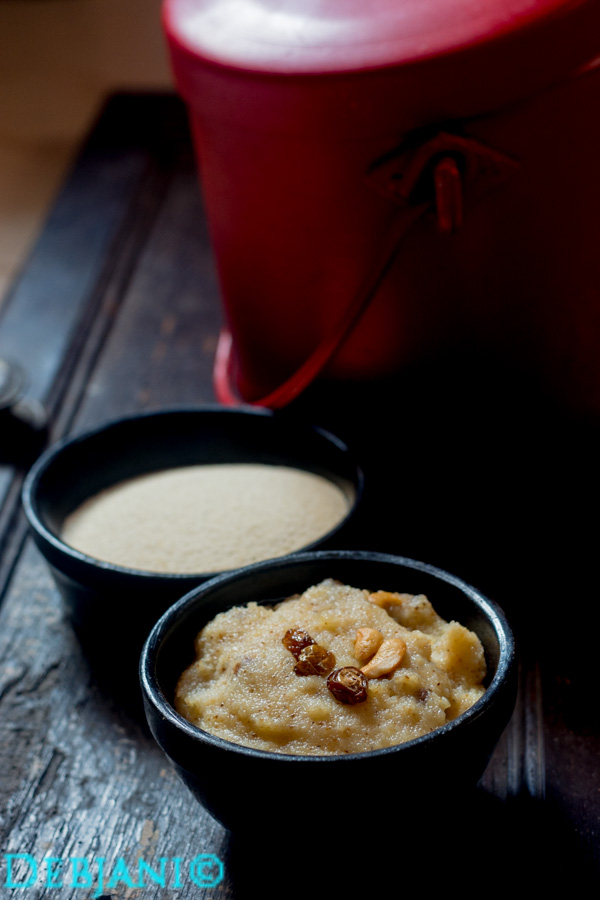
Substitutions
- Vegan - instead of sugar use coconut milk, replace milk with coconut milk or almond milk; skip ghee
Variations
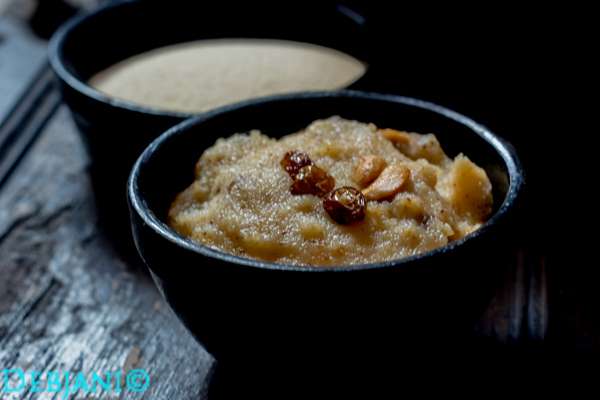
- low on calories - Replace sugar and add jaggery; instead of full cream milk use toned milk and skip ghee
- Deluxe - add some more Ghee
- Kid-friendly - go low on Ghee
Equipment
I prefer to use a non-stick pan while cooking doodh Sooji. You can check my mohonbhog video (shared below) to get an idea.
Top tip
Doodh Sooji is a light dessert. Do not make it thick like regular halwa.
Frequently Asked Questions
Doodh Sooji is a popular Dessert dessert, but it is not the same as Halwa. It is a much lighter version of the classic and is made using semolina. It is a runny kheer that is prepared by boiling semolina with a generous amount of milk to make a porridge-like consistency. Unlike Sooji Halwa, Doodh Sooji is not as rich and indulgent, but it is still incredibly comforting and enjoyable. It is also known as Suji or Mohanbhog, and is a beloved dessert in the Bengali culture.
Doodh Sooji is not only tasty, but it also has many health benefits. It is a great source of carbohydrates, as well as important vitamins and minerals such as phosphorus, calcium, magnesium, and potassium. It also contains essential fatty acids which can help reduce inflammation and protect against certain diseases. Overall, Doodh Sooji is a delicious and nutritious dessert that is worth giving a try.
Doodh Sooji is a very versatile dessert and can be enjoyed by people of all ages, from toddlers to the elderly. To make the lighter version, we do not add ghee. This makes it a much healthier alternative to the traditional Halwa. We serve it as porridge and is a great way to add a sweet touch to breakfast. Doodh Sooji is the perfect balance between a light snack and a delicious dessert and is sure to be enjoyed by everyone.
Related
Looking for other recipes like this? Try these:
Pairing
These are my favorite dishes to serve with [this recipe]:
Here's how I cook Doodh Sooji at Debjanir Rannaghar!
PrintRecipe Card
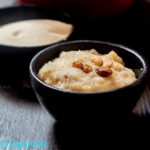
Doodh Sooji
- Total Time: 20 mins
- Yield: 4 People 1x
Description
Doodh Sooji aka Suji aka Mohanbhog is a milk and semolina-based Bengali versatile dessert which can be eaten as porridge, and often served as prasad.
Ingredients
- 100g Semolina/ Sooji
- 1 liter Full-cream Milk
- 100g Sugar
- 25g Cashewnut
- 25g Raisin
- 1 Bay Leaf
- 5 Green Cardamom
- 2 Tbsp. Ghee
Instructions
- Take 1 Tbsp. Ghee in a pan and let it melt.
- Now fry the cashew nuts and remove from the pan.
- Fry the raisins as well till those are fluffy.
- Remove from the pan once done.
- Add bay leaf and 2 green cardamoms to the remaining ghee in the pan and fry.
- Now in the pan add the semolina and fry for around 1 minute in low flame or till it turns light golden in color.
- Add half of the milk and keep the flame on the lower side.
- Stir vigorously so that there is no lump.
- Now add remaining milk and mix.
- Keep cooking on low flame for around 5 minutes.
- Once the Semolina is properly cooked, add sugar.
- Mix properly and cook till the sugar dissolves.
- You can either make it runny or a bit thick.
- Based on the consistency you need, add crushed green cardamom when you reach the desired consistency.
- Mix using a ladle.
- Add fried cashew nut as well as fried raisins. Keep a few for garnishing.
- Mix lightly.
- Once done, add remaining ghee and mix again.
- Check the consistency.
- I prefer it a bit runny when served as doodh suji, the dessert, and a bit thick when served as Mohanbhog.
- Garnish with fried cashew nut as well as raisin while serving.
- Doodh Sooji aka Mohanbhog is best served at room temperature.
Notes
- You can adjust Sugar based on your need;
- Ghee can be completely skipped if made for toddlers or for the elderly people.
- Prep Time: 5 mins
- Cook Time: 15 mins
- Category: Dessert
- Method: cooking
- Cuisine: Bengali
Nutrition
- Serving Size: 100g
- Calories: 425
- Sugar: 40.6g
- Sodium: 124mg
- Fat: 14.9g
- Saturated Fat: 7.7g
- Carbohydrates: 63.3g
- Fiber: 1.6g
- Protein: 12.9g
- Cholesterol: 38mg
Doodh Sooji aka Mohonbhog Video Recipe
Bengali Dessert recipe from Debjanir Rannaghar!
- Kolar Bora (also known as Bengali Banana Fritters)
- Gokul Pithe (also known as Bengali Madan Gokul Pitha)
- Bhapa Doi (also known as Bengali Steamed Yogurt)
- Kamala Bhog (also known as Kamala roshogolla)
- Komola Kheer (also known as Kheer Komola or Bengali Orange Kheer or Komlalebur Payesh)
- Chaler Payesh (also known as Bengali Rice Kheer)
- Khejur Gurer Payesh (also known as Bengali Rice Kheer with Date Palm Jaggery)
- Dudh Puli (also known as dudh pithe)
- Rosh Bora ( also known as Fritters served with Runny Sugar/ Jaggery syrup) | Bengali Rosh Bora recipe
- Gujiya, the Bengali sweet (also known as gujia sondesh)
- Choshir Payesh (also known as choshi pithe)
- Janai-er Monohara! Monohara (also known as মনোহরা)
- Chandrapuli (also known as narkol sondesh)
- Taler Bora (also known as Sugar Palm Fritters)
- Narkeli Jam Pitha (Also known as jam pithe)
- Patishapta (also known as Bengali Patishapta Pitha)
- Taler Bibikhana Pitha (Also known as Taler Pithe or Sugar Palm Cake)
- Khejur Gurer Rosogolla (Also known as Gurer Rosogolla)
- Kancha Golla 9Also known as norom paker sondesh)
Have you tried the Doodh Sooji aka Mohanbhog recipe from Debjanir Rannaghar!
Do let me know how it came out. Also, I would love to see a picture of the same which you can share here at dolonchttrj@gmail.com. Meanwhile, on Instagram, you can use my hashtag #debjanirrannaghar and in addition, you can tag me at @foodofdebjani.
Here's the Suji Pin for your Pinterest Board!
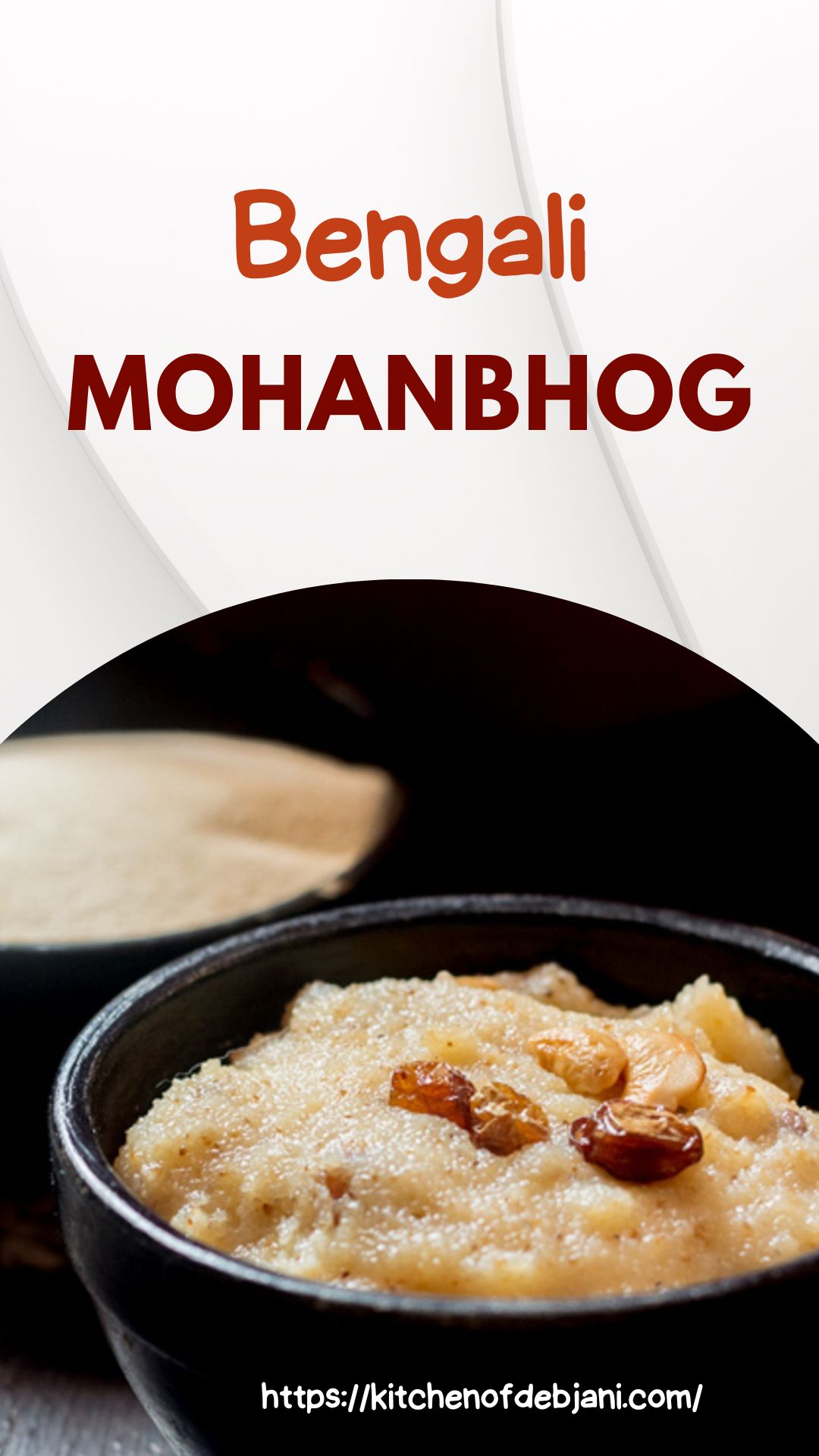

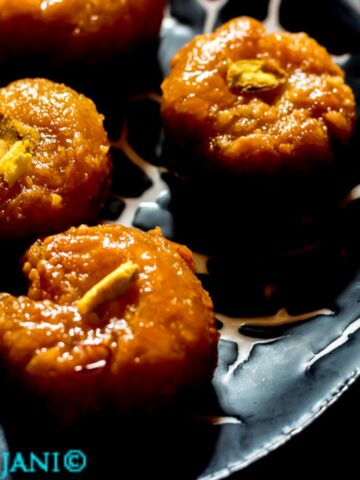
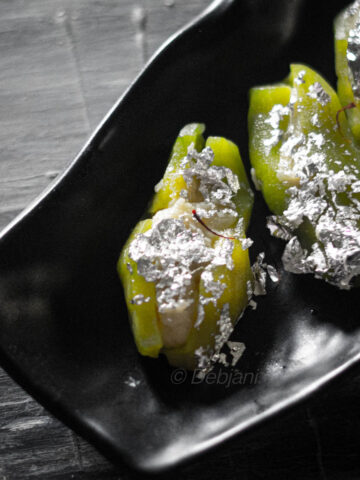

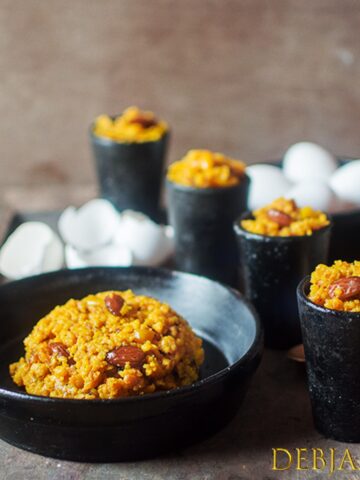
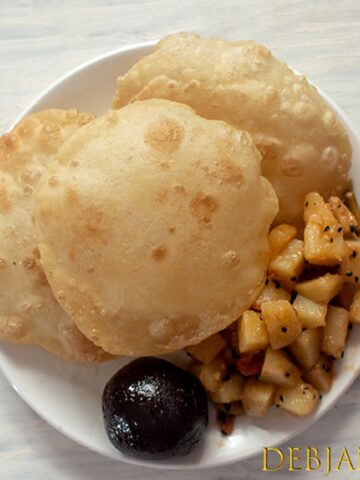
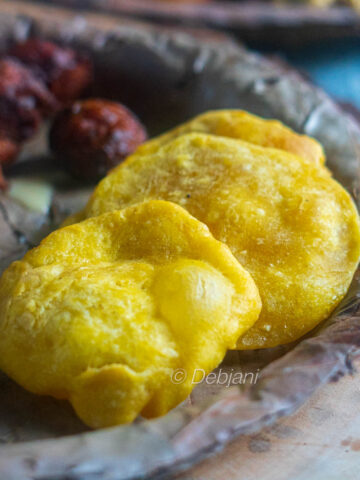
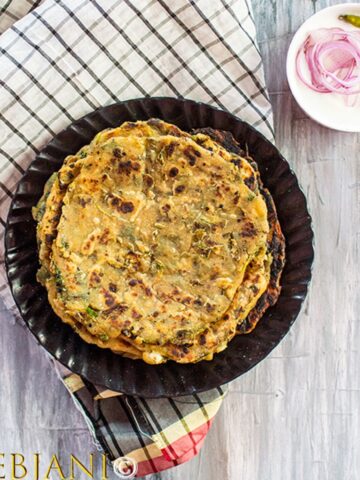
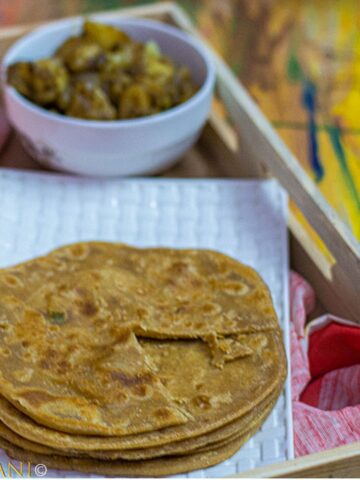




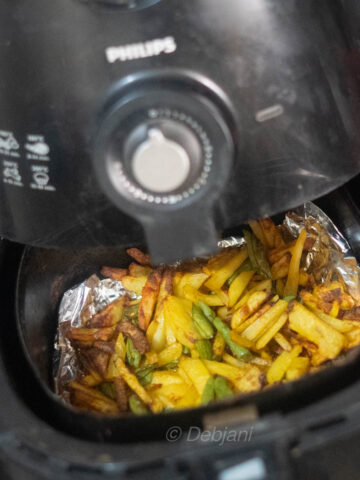
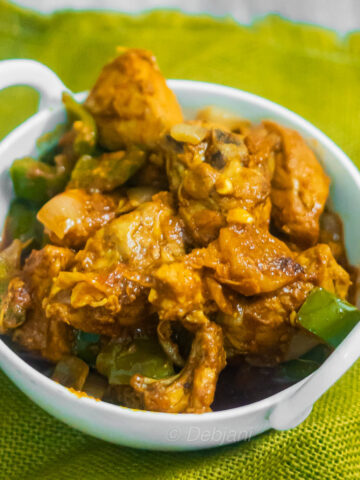
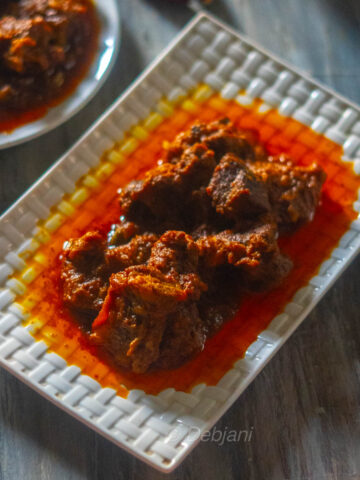
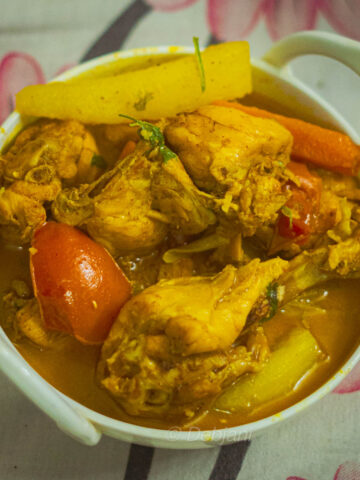
Leave a Reply